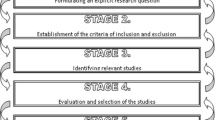Abstract
The aim of the study is to demonstrate, via the use of the discipline of Education, a procedure to identify and weight the importance of various indicators of research productivity which in turn have become significant components in determining quality within and between universities. The methodology allows for the identification of indicators that are most important, and ascertains if there are differences among academics as to the relative weighting of the various research indicators.
Highly valued indicators of research productivity amongst the Education academics were refereed journal articles, peer reviewed books, and major competitive research grants. Refereeing was critical in the determination of quality in research productivity, and the findings generalized across many academics regardless of their own personal productivity. It is recommended that the methodology can serve to determine the tacit weights that academics within and across disciplines attach to various research products. At least, this method makes academics and administrators aware of the weightings they are actually using when making decisions about the quality of academic departments.
Similar content being viewed by others
References
Byers, J., and Evans, T. (1980). Using a Lens-Model Analysis to Identify Factors in Teaching Judgment. (Research Series} 73). East Lansing: Michigan State University, Institute for Research on Teaching.
Bourke, P. (1986). Quality Measures in Universities. Canberra: CTEC.
Brunswick, E. (1943). ‘Organismic achievement and environmental probability‘, Psychological Review50, 255–272.
Cave, M., Hanney, S. and Kogan, M. (1991). The Use of Performance Indicators in Higher Education: A Critical Analysis of Developing Practice, 2nd ed. London: Jessica Kingsley Publishers. Committee for Quality Assurance in Higher Education (1993) Quality Assurance Program. Canberra: DEET. Committee for Quality Assurance in Higher Education (1995) Quality Assurance Program. Guidelines. Canberra: DEET.
Cooksey, R. and Freebody, P. (1985). ‘Generalized multivariate lens model analysis for complex human inference tasks‘, Organizational Behavior and Human Decision Processes 35, 46–72.
Cuenin, S. (1987). ‘The use of performance indicators in universities‘, International Journal of Institutional Management in Higher Education11, 117–139.
Franklin, J. (1988). ‘Selectivity in funding: Evaluation of research in Australia‘, Prometheus6, 34–59.
Grigg, L. and Sheehan, P. (1989). Evaluating Research: The Role of Performance Indicators, Brisbane: University of Queensland.
Hammond, K.R., McClelland, D. and Mumpower, (1980). Human Judgment and Decision Making: Theories, Methods and Procedures. New York: Praeger.
Hattie, J.A. (1990). ‘Performance indicators in education‘, Australian Journal of Education34, 249–276.
Hattie, J.A., Tognolini, J., Adams, K. and Curtis, P. (1991). An Evaluation of a Model for Allocating Research Funds across Departments within a University Using Selected Indicators of Performance. Canberra: DEET.
Hattie, J.A., Print, M. and Krakowski, K. (1994). ‘The productivity of Australian academics in education‘, Australian Journal of Education38, 201–218. National Board of Employment, Education and Training. (1993). Research Performance Indicators Survey, Commissioned Report No. 21, Canberra: AGPS. National Board of Employment, Education and Training. (1994). Quantitative Indicators of Australian Academic Research, Commissioned Report No. 27. Canberra: AGPS. Performance Indicators Research Group. (1991).Performance Indicators in Higher Education, Canberra: DEET.
Print, M. and Hattie, J. (1994). Determining research productivity of education academics. Presented at the Australian Association for Research in Education, Newcastle.
Print, M. and Hattie, J. (1995, May 10). ‘Citation approach to determining quality must be used with caution‘, Higher Education Supplement, The Australian, p. 30.
Shavelson, R., Webb, N. and Burstein, L. (1986). ‘Measurement of Teaching‘, in Wittrock, M. (ed.), H andbook of Research on Teaching, 3rd ed. New York: Macmillan.
Slovic, P. and Lichtenstein, S. (1971). ‘Comparison of Bayesian and regression approaches to the study of information processing in judgment’, Organizational Behavior and Human Performance6, 649–744.
Taylor, M. (Chair). (1988). Report of the AVCC/ACDP Working Party on Performance Indicators. Canberra: AVCC/ACDP.
Author information
Authors and Affiliations
Rights and permissions
About this article
Cite this article
Print, M., Hattie, J. Measuring quality in universities: An approach to weighting research productivity. Higher Education 33, 453–469 (1997). https://doi.org/10.1023/A:1002956407943
Issue Date:
DOI: https://doi.org/10.1023/A:1002956407943




